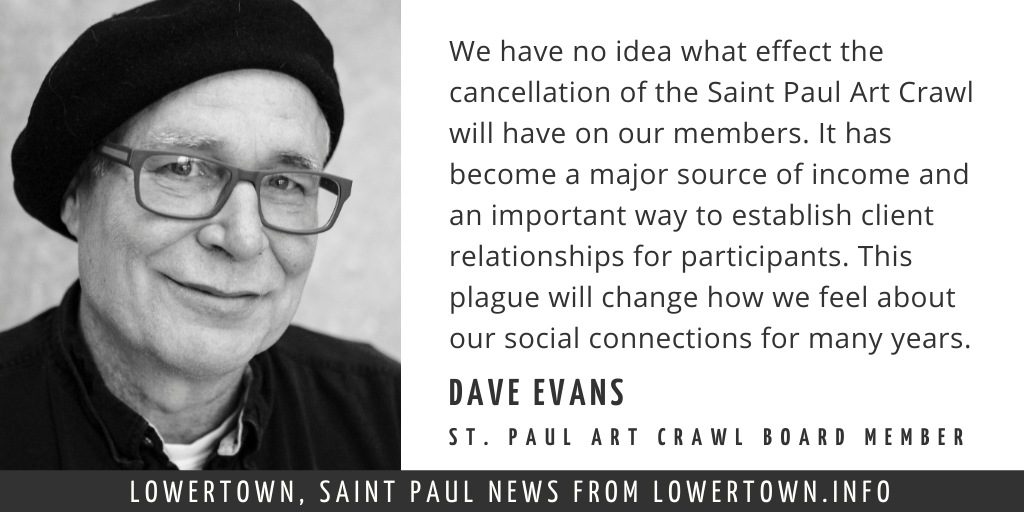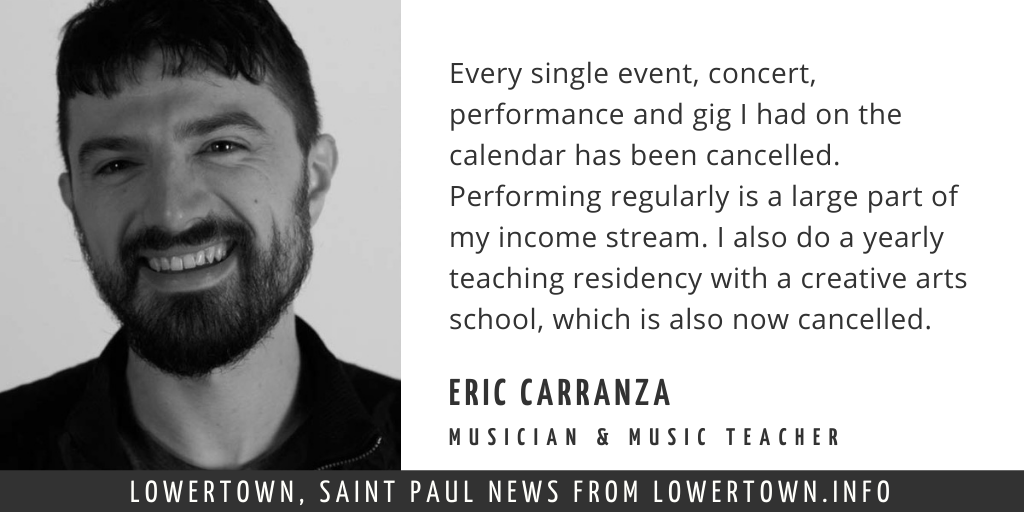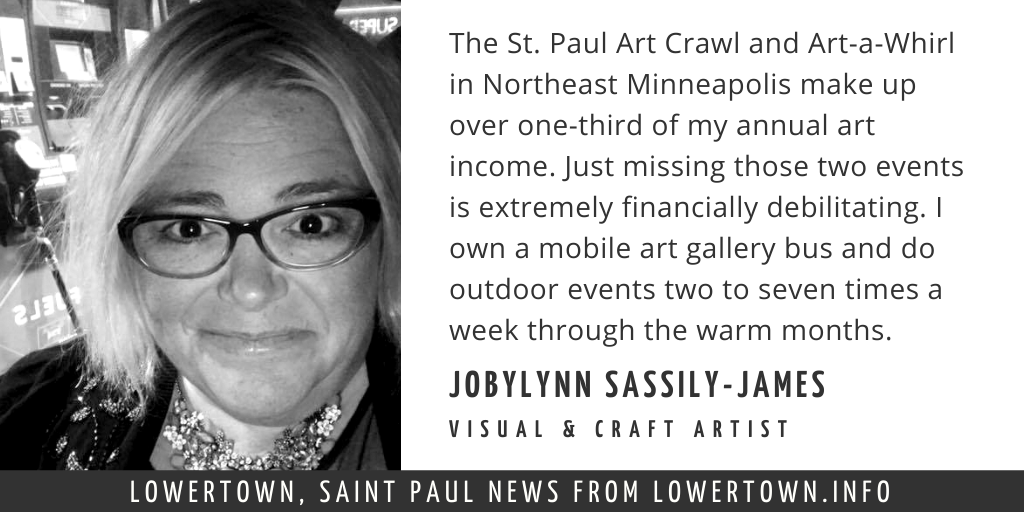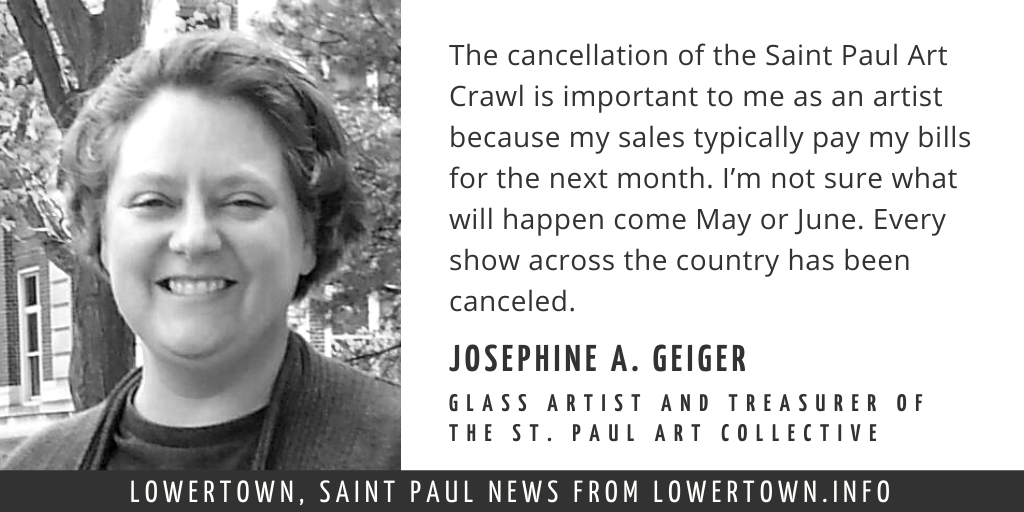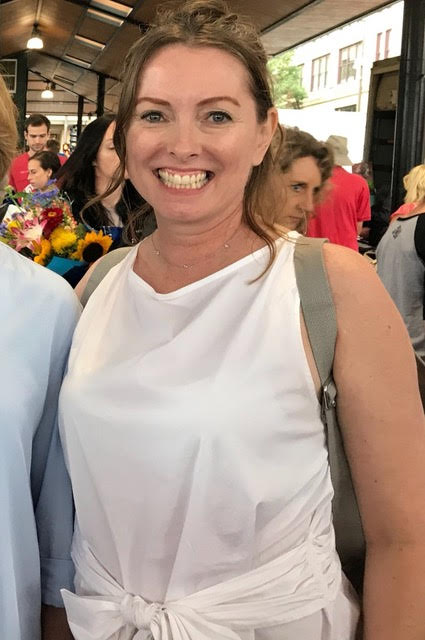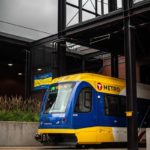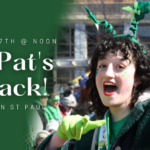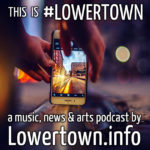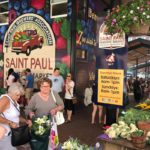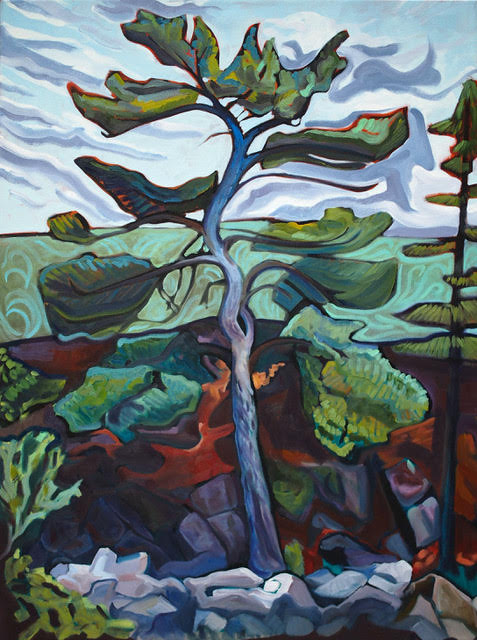
Heather Friedli’s winning picture from last year’s SPAC member show, currently featured on the cover of the 2020 SPAC Directory.
Event cancellations have dealt a huge financial blow to artists who rely on the Crawl for survival, along with other large events such as the Art-a-Whirl in Northeast Minneapolis and a long list of established summer regional art fairs and gallery shows.
The fragile market that artists have spent years establishing—and somehow kept making work—has dried up and irrevocably changed, at least for the foreseeable future. To make matters worse, the hospitality industry, which provides supplemental income for many artists, has been severely affected as well.
Read the May 2020 feature, “After widespread cancellations, artists need your support”
The Collective has valiantly used its resources to help its member artists adjust by providing advice on how to host and promote live and recorded video events and online group galleries. This spring’s first-ever virtual crawl helped the SPAC board and artists alike discover what does and does not work in that realm.
Introducing Art Month
SPAC’s conclusion was to ditch the fall 3-day weekend in-studios event and introduce an entire month of virtual art events throughout October, dubbed “Art Month”.
Features of this release of Virtual Saint Paul Art Crawl 2.0 include:
- Lowertown Virtual Studio Crawl (10/2-10/31) – Lowertown Area only
- Members Fall Art Competition (10/1-10/18) – Members Only
- Art for Sale! (10/2-10/31) – each registered participant will have one profile online
- Art Auction (10/2-10/31) – open to ALL participants
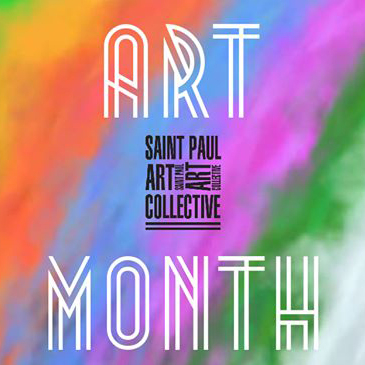
The full list of events is available at https://stpaulartcollective.org/art-month.
Lisa McCann, SPAC’s director of community development, sees the considerable current challenges as part of the organization’s continuum.“For decades the St. Paul Art Collective has grown and evolved with the times,” she said. “This year, like everyone, we were hit with COVID-19 and realized, early in 2020, that the live event upon which we based our past was not an option. We had to pivot to a virtual platform before anyone really understood the magnitude of the current situation. Studio tours, art talk, and artist visits with patrons were all off the table back in March and continue to be so now.”
While time will tell if the virtual Crawl format can match the popular in-studio events in terms of patron participation, McCann sees reasons for optimism. “Approximately 100 artists participated in the spring crawl,” she said. “Our artists and supporters stepped up and adapted in ways that were profoundly inspiring. The Spring Crawl saw more virtual art presentations and sales than ever before.”
The expansion of the normal 3-day Crawl to an entire month of events this October will likely help the event reach more people.
“It’s much more than a virtual crawl,” said McCann. “We learned from our virtual spring event that education is the key. SPAC’s social media platforms reach more than 10,000 collectors and lovers of art, and its partnership with Jazz 88.5 FM, Visit St. Paul, and The St. Paul Area Chamber of Commerce gives us an outreach to tens of thousands of engaged people across the Twin Cities.”
Getting by with a little help from our friends
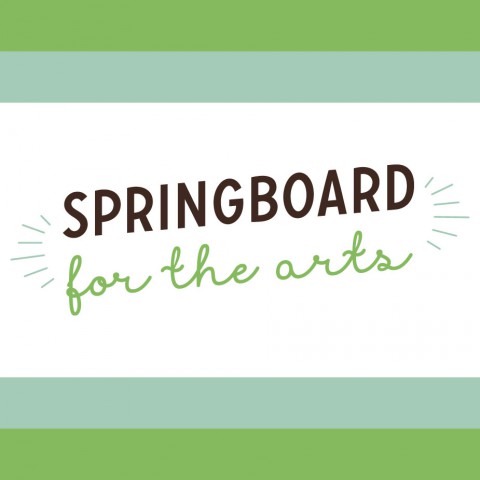 The Twin Cities arts community realized early on that 2020 would become a byword for artists. As artists and performers reeled from the loss of income, organizations like Springboard for the Arts stepped up with direct aid.
The Twin Cities arts community realized early on that 2020 would become a byword for artists. As artists and performers reeled from the loss of income, organizations like Springboard for the Arts stepped up with direct aid.
Between Mar. 13 and June 30, Springboard offered its existing Personal Emergency Relief Fund—which offers grants of $500 to artists with medical needs or other career-threatening emergencies—to those who had lost income due to COVID-related cancellations.
Springboard gave more than $1 million to a total of 2,000 artists. Even more encouraging is that more than 1,300 people have donated over $175,000 to the fund (learn more at springboardforthearts.org).
Watch Springboard staff thank donors for their support of artists (3 mins)
Meanwhile… in Lowertown
At the community level, artist organizers in Lowertown have turned the challenge into an opportunity to innovate. Tara Weatherly from the Lowertown Underground Artists gallery in the Northern Warehouse and Rachel Wacker from the Rage to Order Artists’ Initiative, who also works as art program director for the St. Paul Saints, joined forces this summer to organize a Sunday art market alongside the existing St. Paul Farmers’ Market.
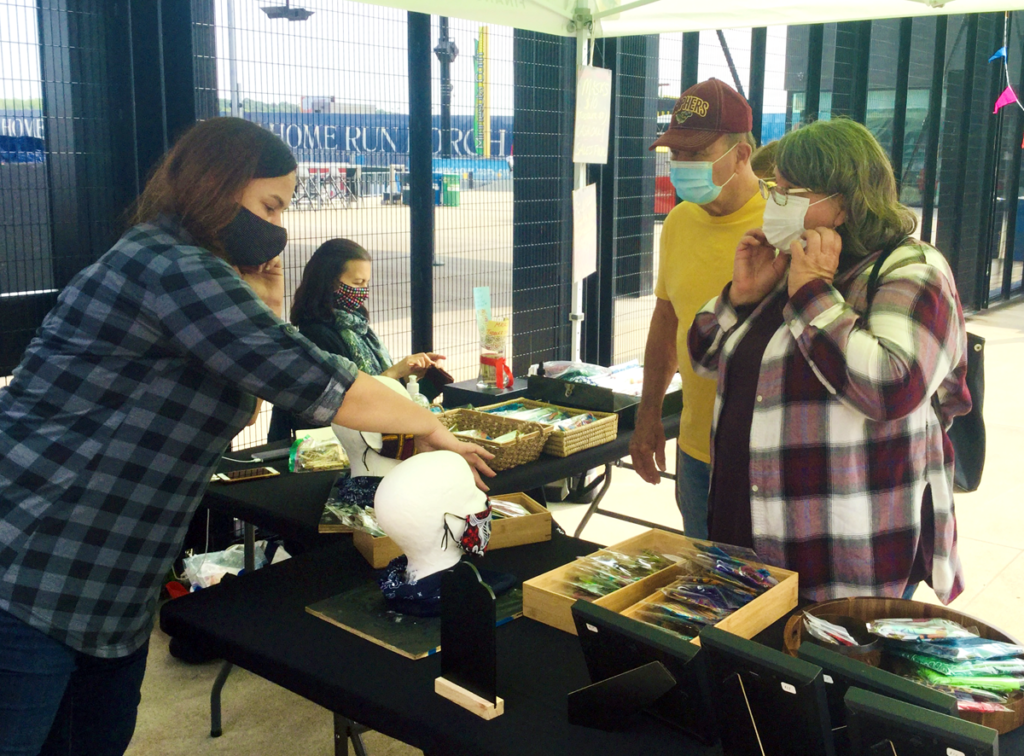
Rachel Wacker (left) and Tara Weatherly sell cloth masks to shoppers at the Lowertown Art Market on 20 September 2020 (Photo: Nigel Parry)
“In our first three Lowertown Art Markets, we saw 17 different artists, many showing at more than one market,” said Weatherly.
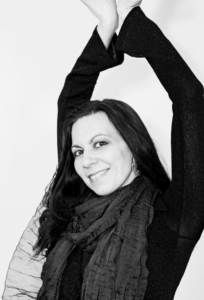
Tara Weatherly (Photo: Patrick Clancy)
For some artists, however, attending live events may put them as risk, especially those who fall into the CDC’s COVID-19 “preexisting conditions” categories—those with autoimmune illnesses, respiratory diseases, and other serious illnesses. Safety is therefore key at any live event.
“Being outdoors, each artist’s tent can be spaced well apart from their neighbors, and masks required for all have helped participants feel confident that we are taking every precaution to make this event as safe as possible,” said Weatherly.
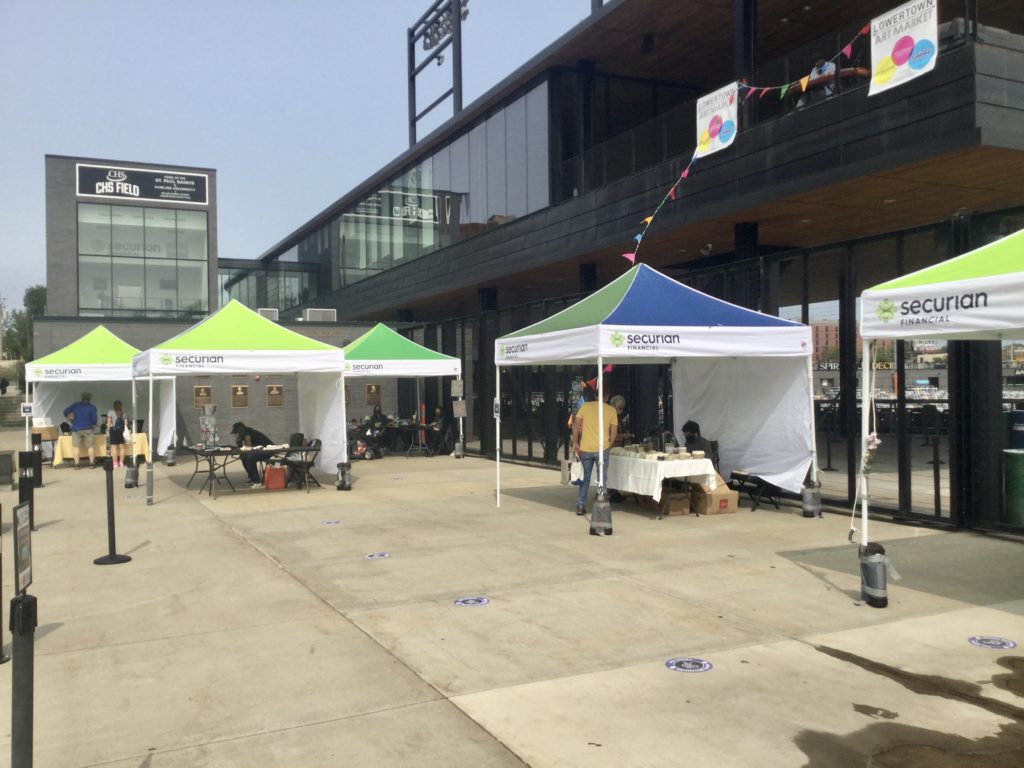
The tents of the Lowertown Art Market spread out across the expansive entrance area to the Saint Paul Saints’ CHS Field stadium in Lowertown, 20 September 2020. (Photo: Nigel Parry)
Rachel Wacker sees the new challenges necessitated by COVID-19 as good time to put into action long-made plans.
“Lowertowners have been envisioning a neighborhood art market for years but no one has stepped up to figure out the logistics until now,” she said.“We see the potential for a permanent Art Market in this community, so we are treating this 7-week series as a pilot program. It will give us some data and first-hand experience that we can use to assess whether an annual summer art market is feasible.” As of press time, Wacker and Weatherly were exploring extending the market into October.
Wacker emphasizes that the Lowertown Art Market would not have been possible without the sponsorship of the Saint Paul Downtown Alliance, Securian Financial, and the St. Paul Saints.
Being an artist in the best of times is a challenge, and the new obstacles added this year have necessitated rapid, dramatic change. While the aforementioned endeavors produce a glimmer of hope, ultimately it will be the public that makes them successful.
Those who strongly believe that art is a necessary part of healthy community life have already begun to step forward, to help artists sustain and survive, by purchasing their art.
